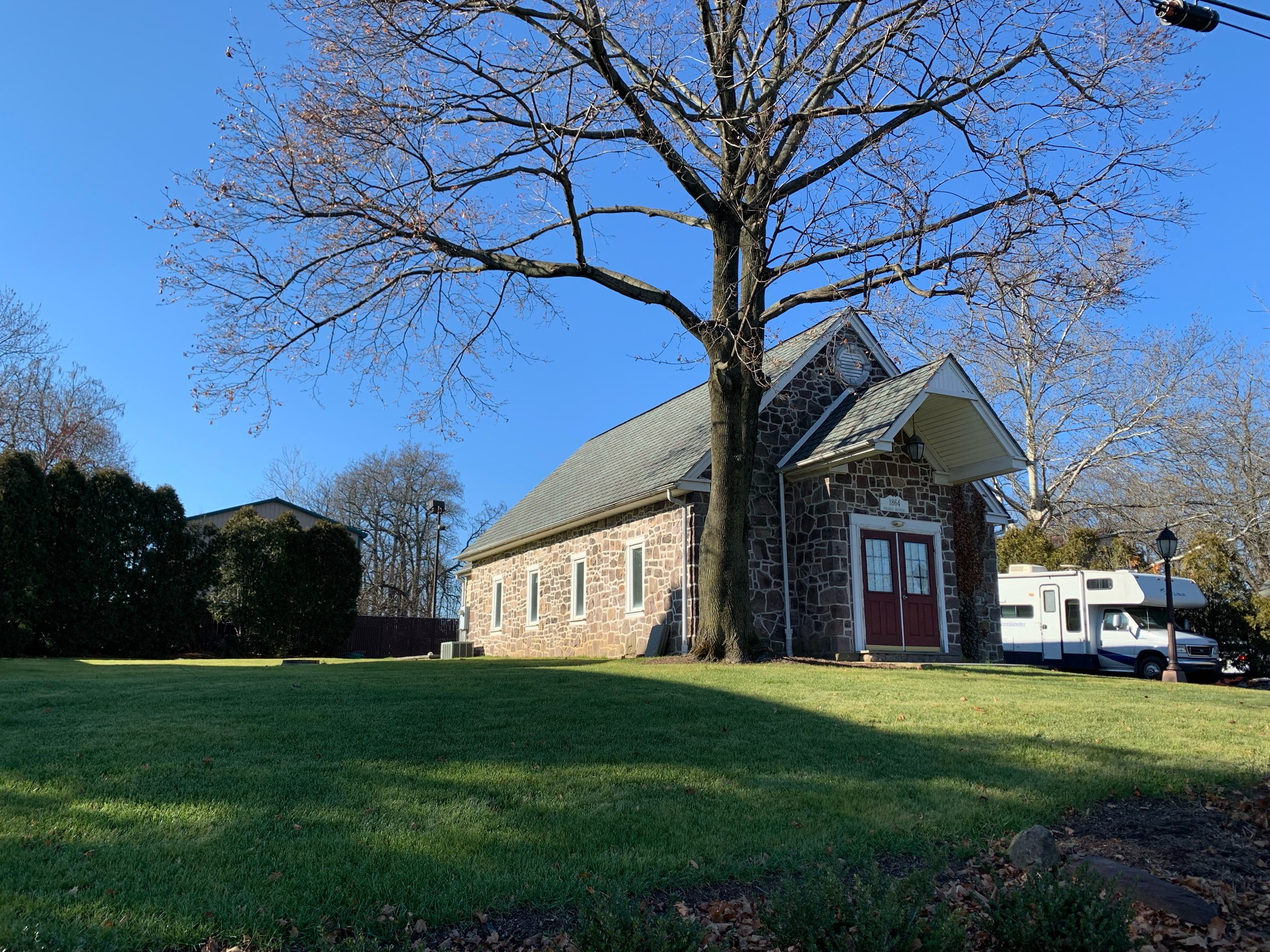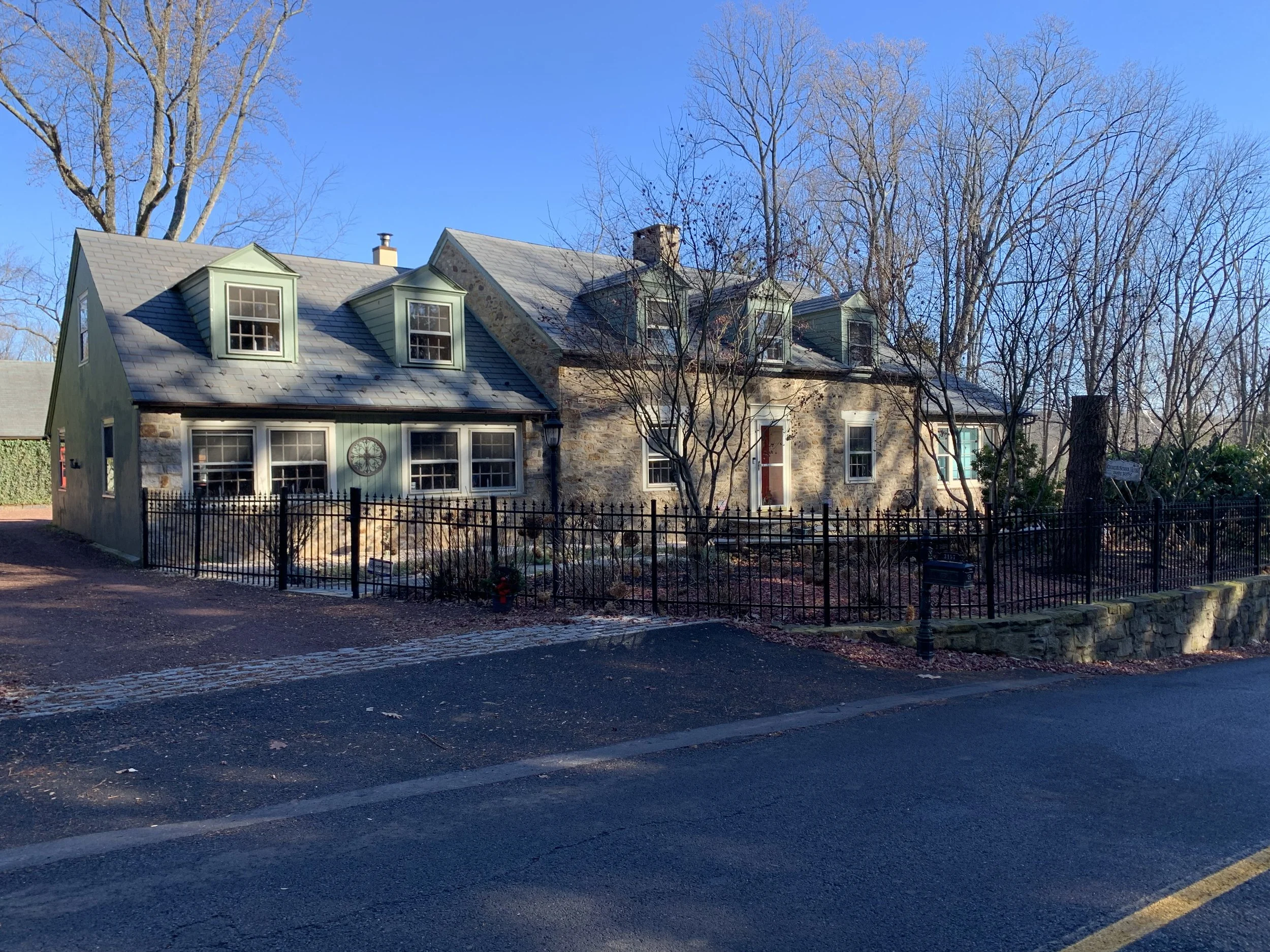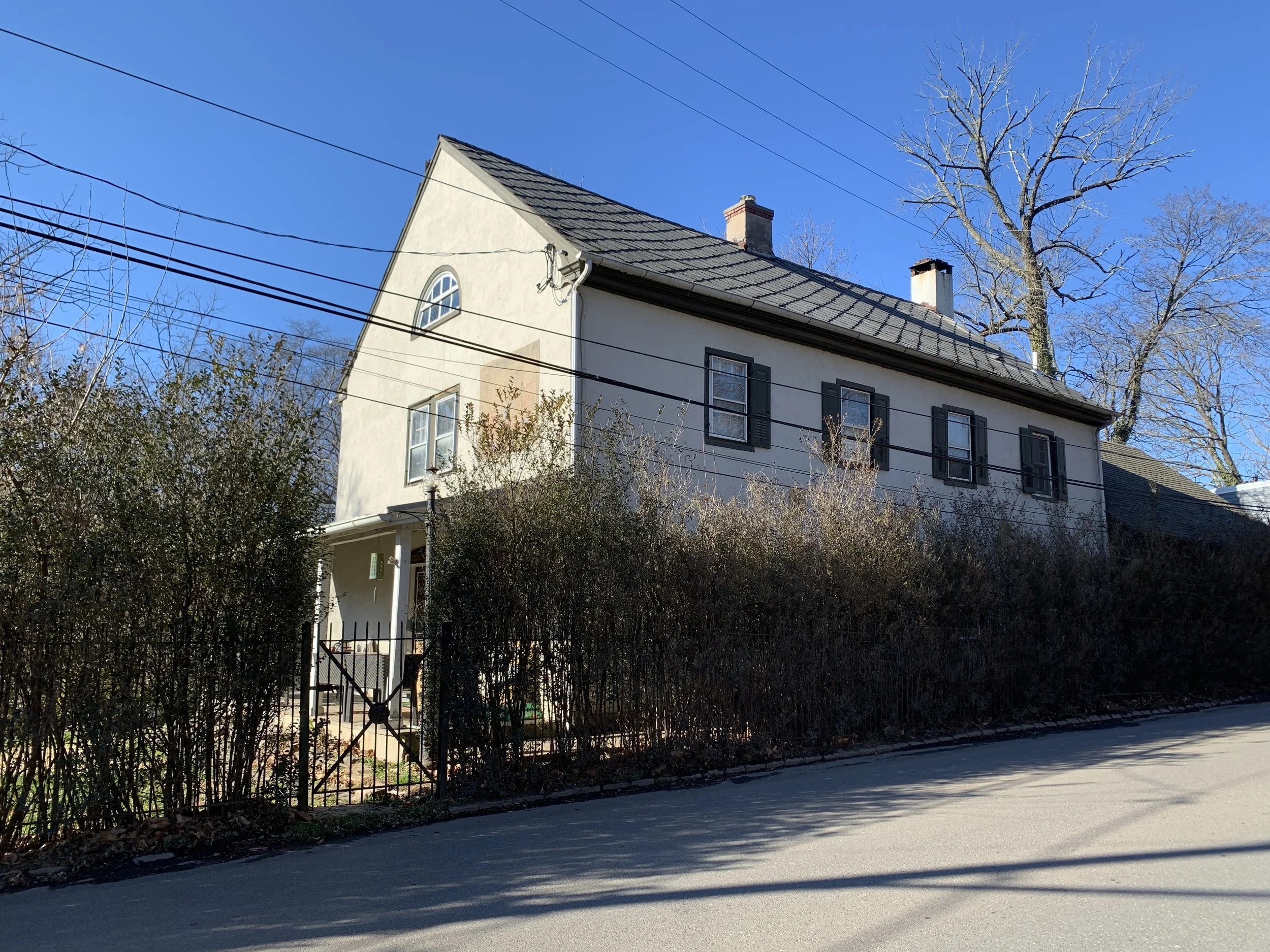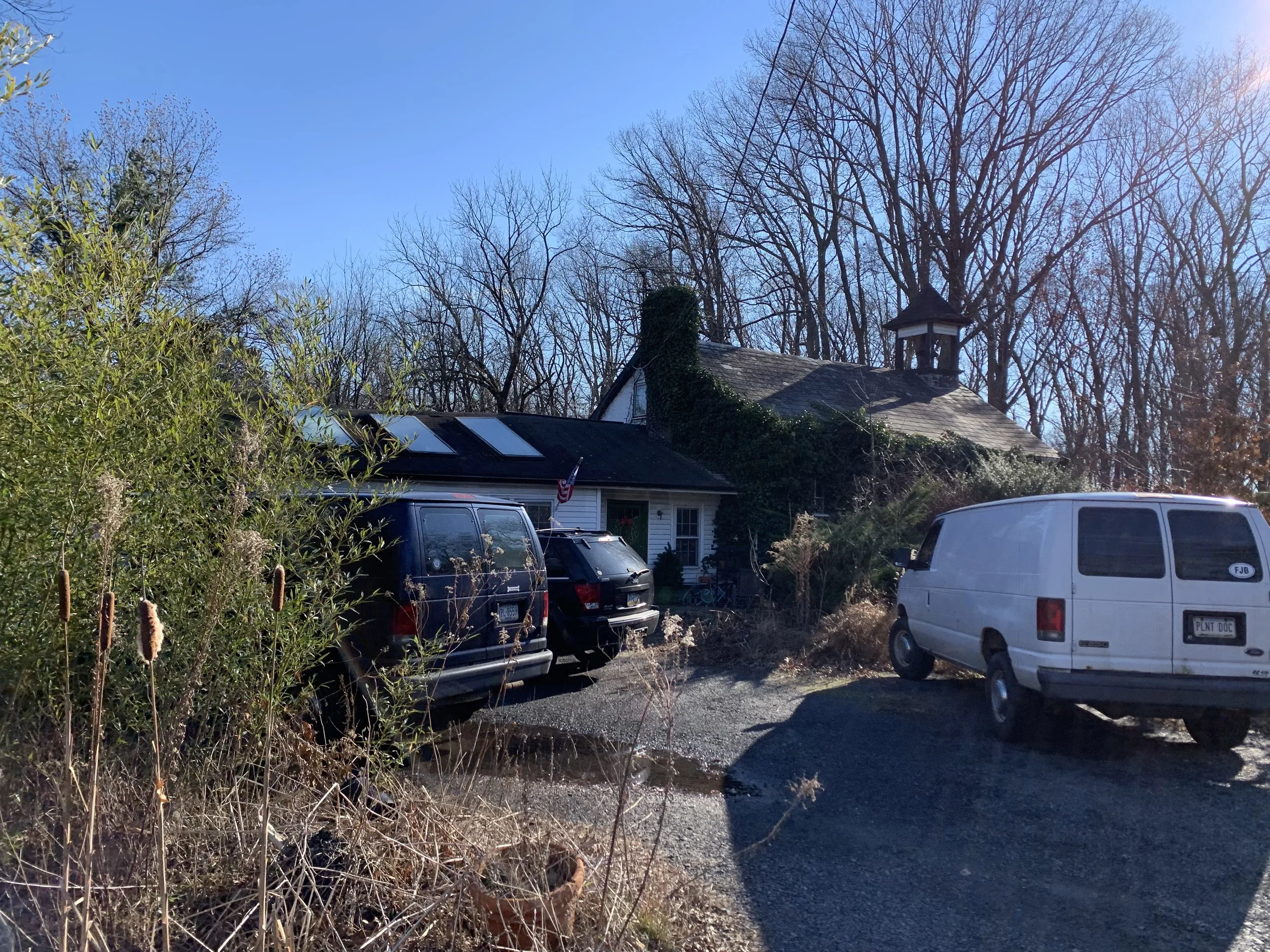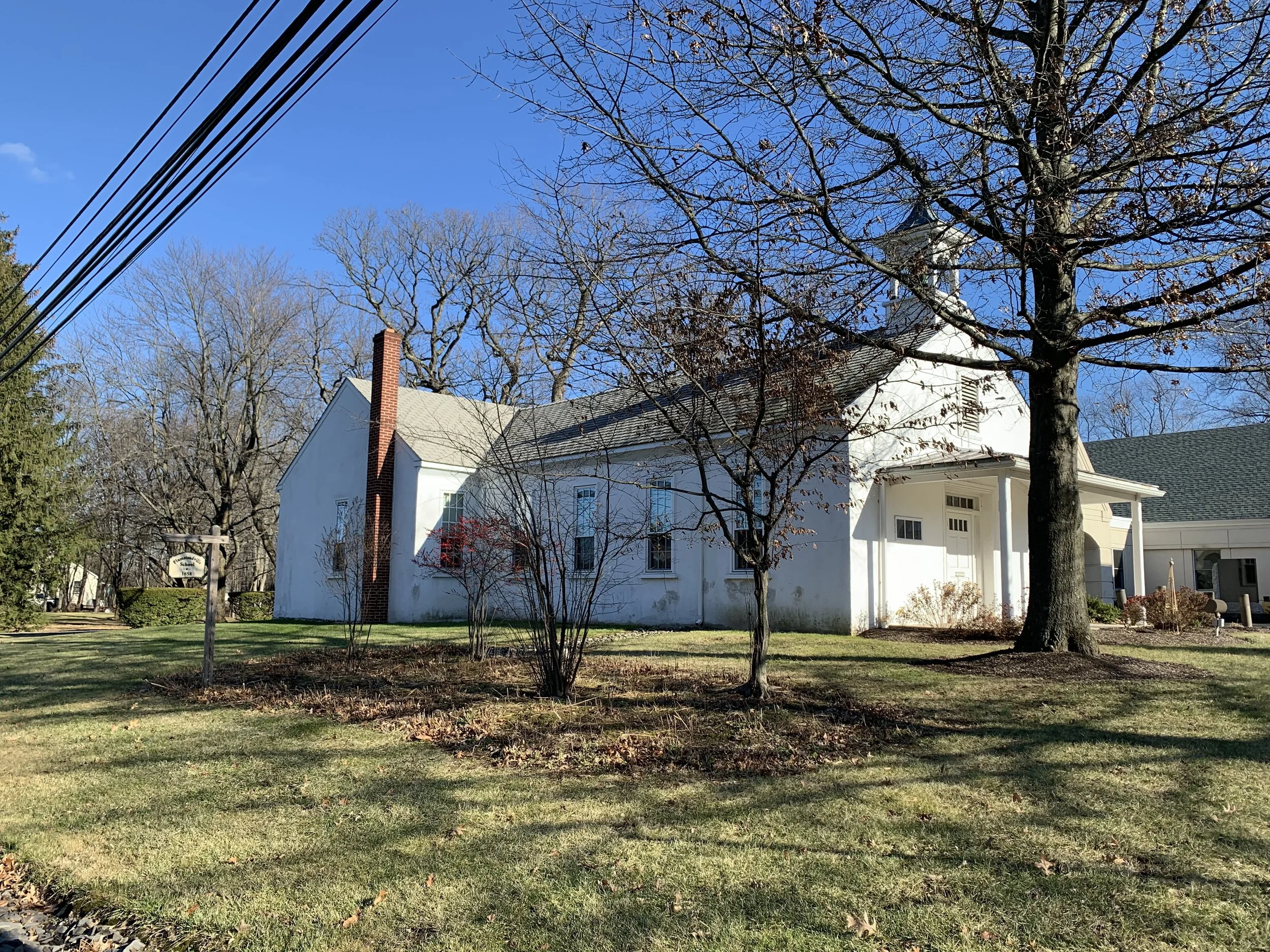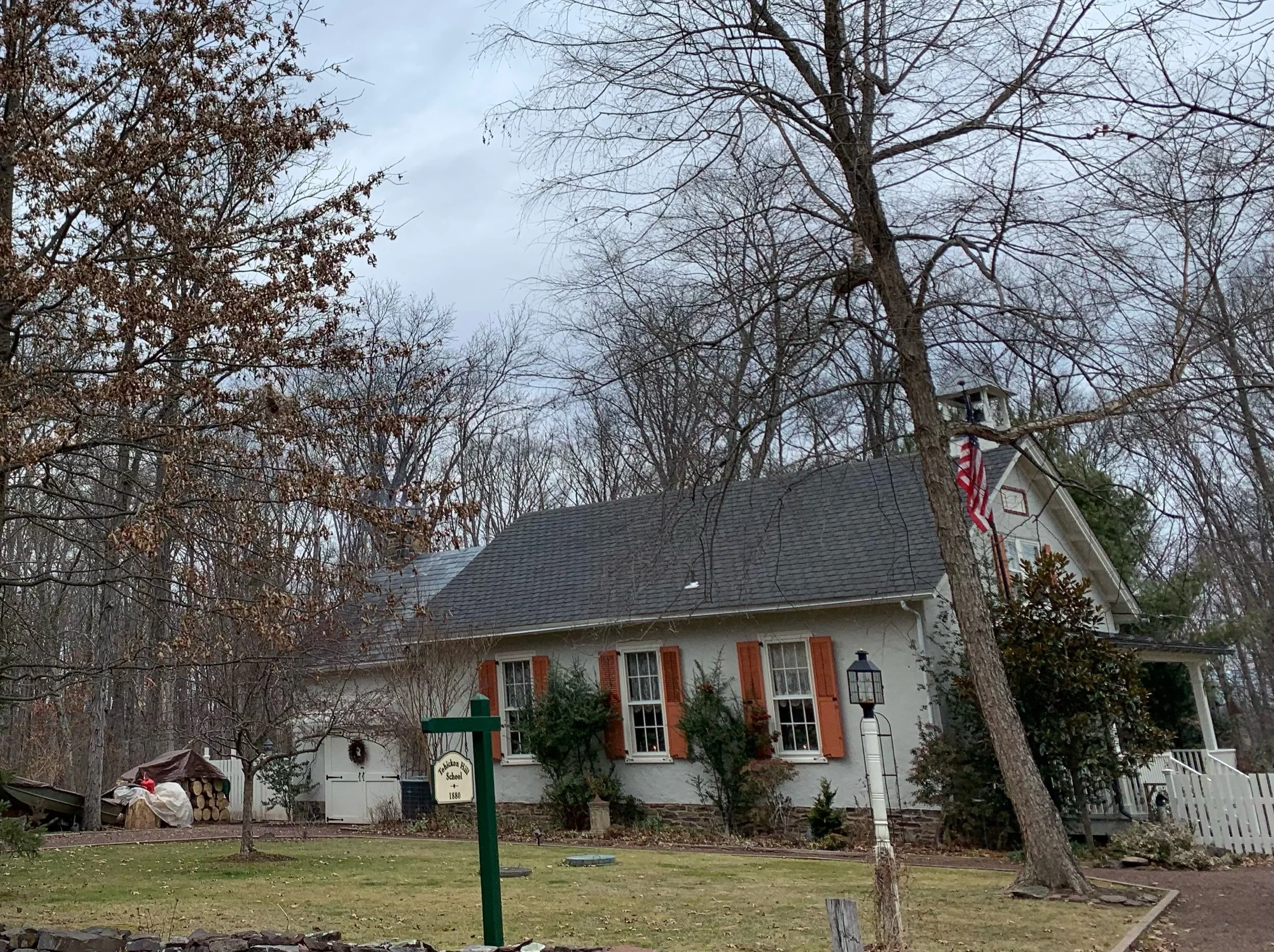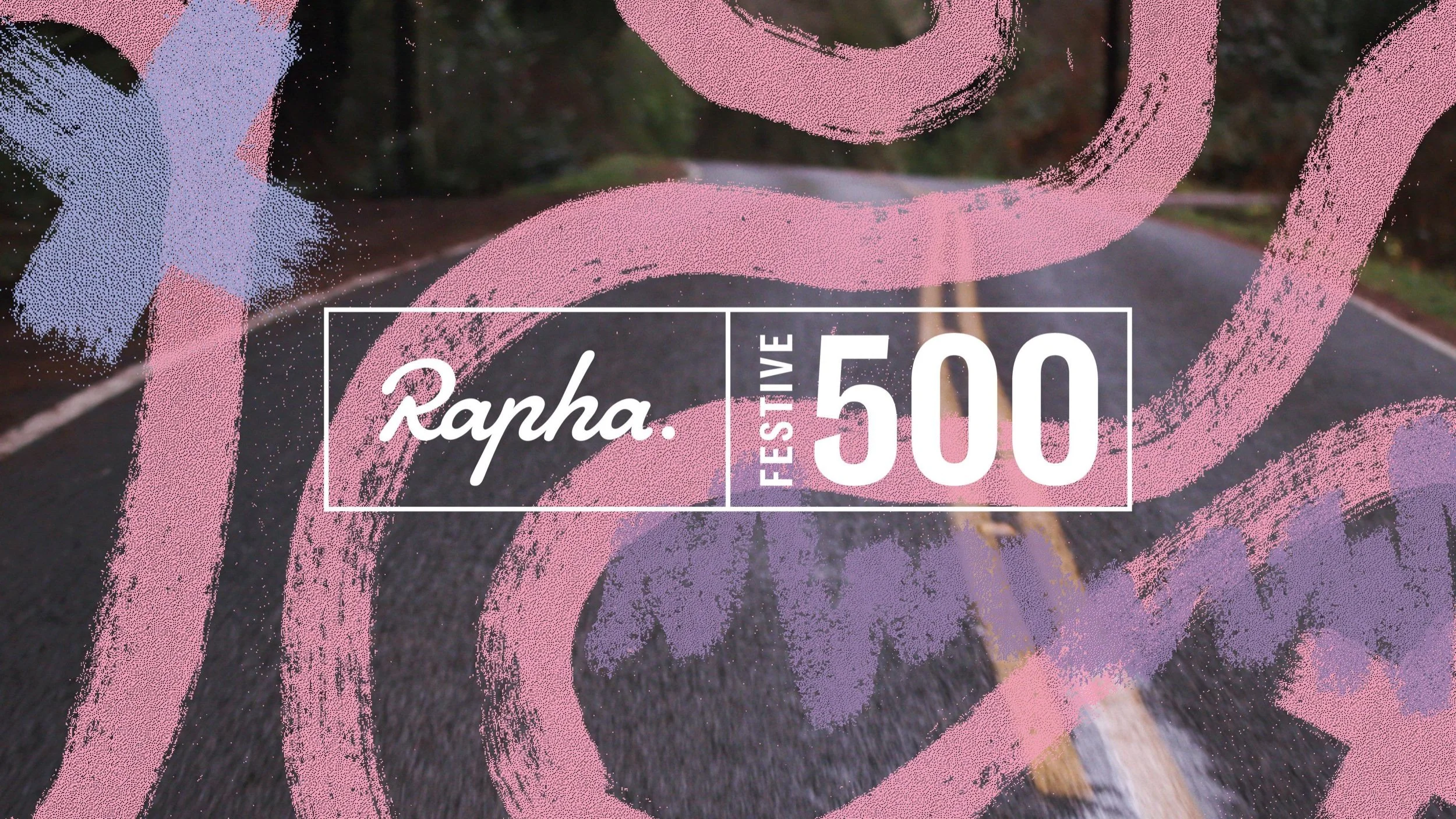Events: The 2021 Rapha Festive 500 Day Three
Ride Distance: 35 Miles/ 258 Remain
(2021) There are more schoolhouses in Bucks County than many people realize. The third day of the Rapha Festive 500, a challenge for cyclists to cover 500 kilometers over the eight days from December 24-31, we decided to look for vintage schoolhouses. Yesterday saw us visit the ol’ standbys. Today we added some unique places. Little do people know how to spot an old school house.
Several years ago we rolled around the middle portion of Bucks County searching for recognizable schoolhouses and came away with an extensive list. Today the route headed slightly south to collect pictures of former schools not previously photographed. Despite the prevalence of schools, we had to omit several other nearby locations for further routes throughout the Festive 500. At one point we rolled alongside a vintage schoolhouse with conviction to keep the camera stowed. Meanwhile the route continued to get altered to preserve schools for further outings. Long story short- we have a lot of schoolhouses in Bucks County.
Dyer’s Hill School 1886
After the first day’s haul of five school houses, today’s route looked to have a modest count. A quick descent down Old Easton Road sent us past the Danboro Community Center, a structure that could have served as a school at one point. Not more than a quarter-mile beyond, the first school featured the easy-to-identify pale sign indicating “Dyer’s Hill School 1886”. John Dyer was a prominent landowner in the area in the early 1700s, having a mill north of current-day Doylestown. This mason structure sits atop one of the mild ridges that wrinkle the landscape between Doylestown and Plumsteadville. A quick glance reveals red shutters along the side as well as the easily noticeable entrance. The belfry is missing, but the khaki and green sign denoting a Bucks County schoolhouse indicates this was a place of education 140 years ago.
Church Schoolhouse 1857
Day three’s route meandered a bit, orbiting outside of Doylestown proper. A couple of quick turns took the path down Church School Road. Any time ‘school’ is in the street name, good things tend to happen. The close nature of Bucks roads were on full regalia as trees leaned over the chippy asphalt. Slowly memory came with regard to the placement of the schoolhouse. Once across the busy Mechanicsville Road, the beautiful structure that is Church School was made apparent by yet another pale sign. The sign attached to the decapitated tree stated the building was pressed into service in 1857, around the same time as many other schoolhouses in the area. Much like the first day’s ride, this school house has been added on to with features beyond education. The building is located uphill from an historic mill, possibly the same families who supported the schoolhouse.
Drawing closer to the hamlet of Edison (also known in history as Bridge Point), a former artist colony, two schools were about to cross off quickly. We grew up in walking proximity to both schools, so this was a homecoming of sorts. Riding along the shoulder of the 611 bypass/ Easton Road, a quick schoolhouse came into view. Managed by a private company the schoolhouse has been restored to its former 1864 appearance. It’s easy to miss the mason building with four windows by car. This is usually when a driver is focusing on merging with 611 traffic. With a dramatic entranceway, the school does lack the identifiable bell on the roof that alerted late students to quicken pace. Nevertheless, this building was nearly lost decades ago as it nearly fell into disrepair.
The writer grew up in the shadow of this 1818 schoolhouse, which frequently saw cars stopping in mid-commute to view the mural on the side of the building.
Less than a half-mile from the school is a remarkable building in the hamlet of Edison. The schoolhouse, dated from 1818, features a mural above its porch. Along the side of the building are three Rs for “Reading, ‘Riting, and ‘Rithmatic.” At some point an artist bought the dwelling and added a log studio. The insulation between the logs was horse hair. This schoolhouse is notable for its size (it’s two stories) as well as its age. Not many schoolhouses boast lineage 200 years ago while appearing modern. Meanwhile the schoolhouse towers over the banks of the Neshaminy Creek, making easy comparison to pupils daydreaming out its windows.
As if determined by fate, the route took many more turns. There had been nearly one school every five miles, but the current turns were new. We located a road named Schoolhouse Road, and it was exactly the throughway needed to send the route back home. Up and over ridges, through county parks, it was decided to bag another school, this one unverified.
Possible schoolhouse on Stump Road.
On the outside of a sketchy turn on Stump Road is a bell on the roof. Being that the dwelling is on the outside of the turn, the bushes probably serve as blockage to high-beams in the night. No sign marks the potential of a schoolhouse, but all the key determinations are in play: the bell, the three windows down the side, and the main entrance all indicate the potential for a former school. Without trying we had collected five schools, matching Day One’s haul. But we had other ideas.
Plunging back down the ridge, and crossing 611 proper, there were multiple choices to take to produce a schoolhouse. Today we neglected the Plumstead Schoolhouse on Valley Park Road. Given the relatively light traffic for Sunday, we collected the Plumstead Municipal Building, or the Plumsteadville School in 1858. Today the schoolhouse serves as a meetinghouse, particularly for events such as the Historical Society. Additions to the building feature the police department, but the original schoolhouse is preserved after 160 years. The amazement continues considering there are three schoolhouses within five miles of the Plumsteadville School.
Plumsteadville Schoolhouse, 1858
Winding around back toward home we kept a lookout for any other buildings. Also, any time a road features ‘school’ in the name, the location is banked for a later experience. It became such a flood of schoolhouses that a return to the office was prioritized instead of trying to bag all of the locations in one outing. It’s unclear whether the proliferation of schoolhouses means education was prioritized or placement was uncertain. Easily five more schoolhouses came to mind in the closing miles of today’s ride. This could be the best Festive 500 idea yet considering how many schools we have yet to pass by. And we haven’t referred to the direction yet.


